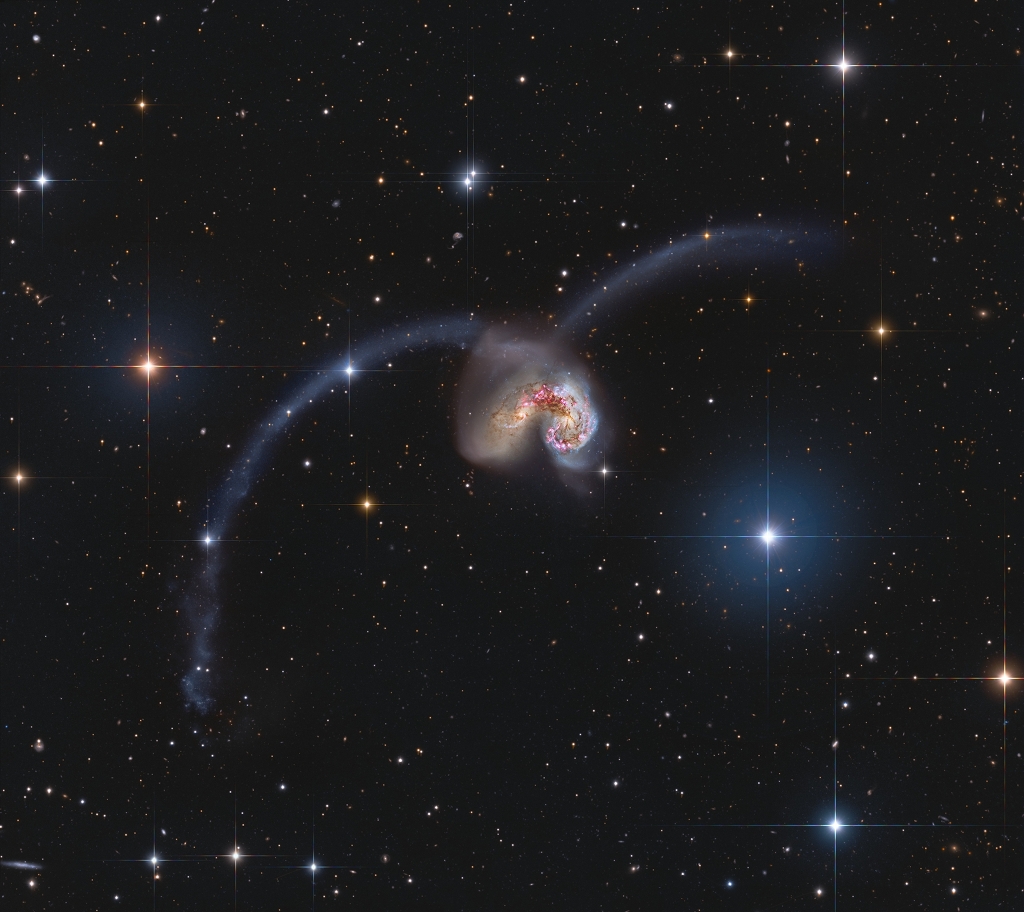Exploring the Antennae
From NASA’s Astronomy Picture of the Day
Some 60 million
light-years away in the southerly constellation Corvus,
two large galaxies are colliding.
Stars in the two
galaxies, cataloged as NGC
4038 and NGC 4039, very rarely collide in the course of the ponderous
cataclysm that lasts for hundreds of millions of years.
But the galaxies' large
clouds of molecular
gas and dust often do, triggering furious episodes of
star formation near the center of the cosmic wreckage.
Spanning over 500
thousand light-years, this stunning
view also reveals new star clusters and matter flung far from the
scene of the accident by gravitational
tidal forces.
The remarkable mosaicked
image was constructed using data from the ground-based Subaru telescope to
bring out large-scale and faint tidal streams, and Hubble Space Telescope data
of extreme detail in the bright cores.
The suggestive visual
appearance of the extended
arcing structures gives the galaxy pair its popular name - The
Antennae.

Image Credit & Copyright: Data; Subaru, NAOJ, NASA/ESA/Hubble - Assembly and
Processing; Roberto
Colombari
